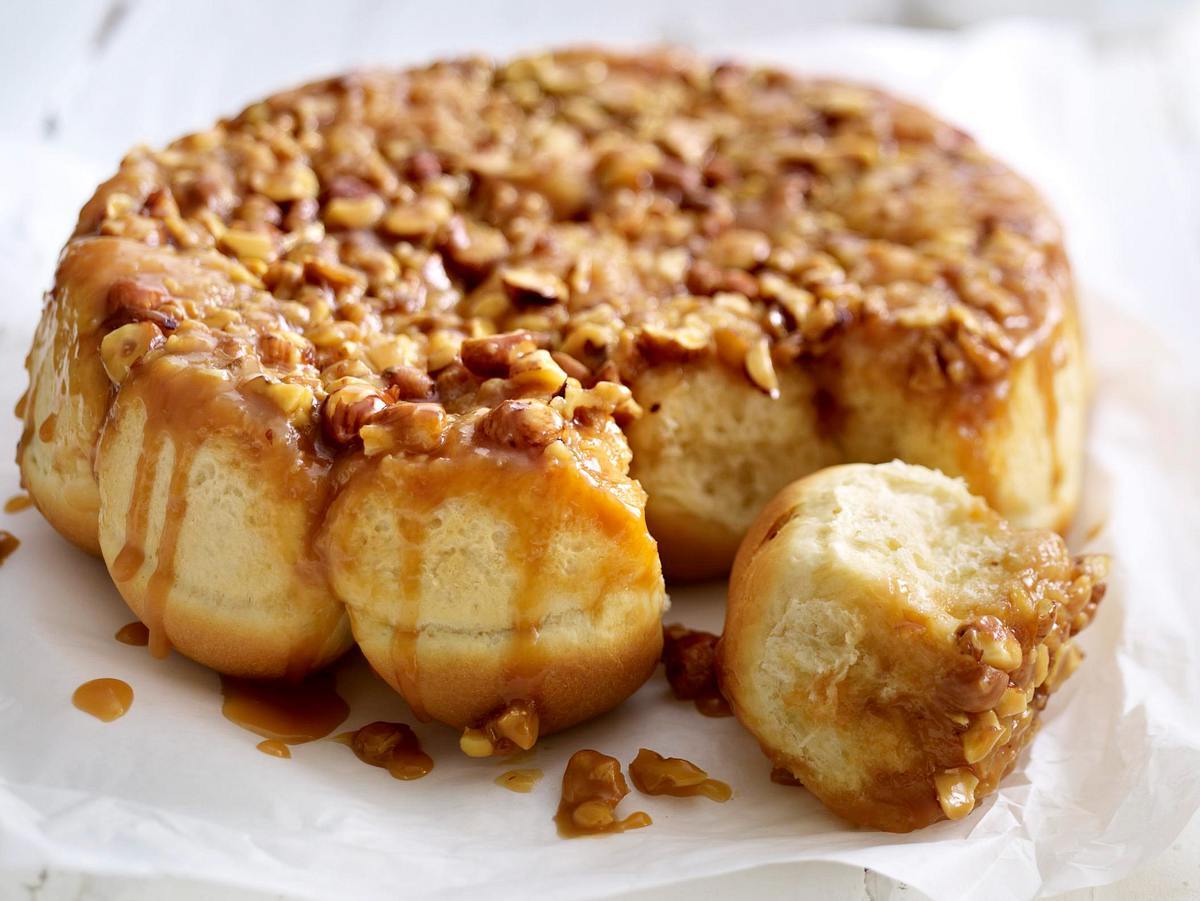
Buchteln are a delightful treat that many might not know about. Originating from Central Europe, these sweet rolls are often filled with jam, poppy seeds, or even chocolate. But what makes them so special? Buchteln are traditionally baked close together, creating a pull-apart effect that's perfect for sharing. They have a soft, fluffy texture and a golden-brown crust, making them irresistible. Whether enjoyed as a breakfast item, dessert, or snack, Buchteln bring a touch of comfort and nostalgia. Curious about their history, variations, and how to make them at home? Keep reading to uncover 33 fascinating facts about these scrumptious rolls!
What are Buchteln?
Buchteln are sweet, fluffy yeast buns filled with jam, poppy seeds, or other delicious fillings. Originating from Central Europe, these delightful pastries have become a beloved treat in many countries. Let's dive into some fascinating facts about Buchteln.
- Buchteln hail from the region of Bohemia, now part of the Czech Republic.
- Traditionally, Buchteln are filled with plum jam, known as "Powidl" in German.
- These buns are often served warm, making them a comforting dessert or snack.
- Buchteln are typically dusted with powdered sugar before serving.
- The dough for Buchteln is enriched with butter and eggs, giving them a rich, tender texture.
- In Austria, Buchteln are sometimes called "Wuchteln."
- Buchteln can be baked in a single large pan, where the buns rise and bake together, creating a pull-apart effect.
- Vanilla sauce is a popular accompaniment for Buchteln in many regions.
- The name "Buchteln" is derived from the German word "Bucht," meaning "bay" or "inlet," referring to the way the buns nestle together in the baking dish.
- Buchteln are enjoyed during various holidays and celebrations, including Christmas and Easter.
How to Make Buchteln
Making Buchteln at home can be a rewarding experience. The process involves preparing a yeast dough, filling it with your choice of filling, and baking until golden brown.
- Start by dissolving yeast in warm milk with a pinch of sugar to activate it.
- Combine the yeast mixture with flour, eggs, melted butter, and a bit of salt to form a dough.
- Knead the dough until smooth and elastic, then let it rise until doubled in size.
- Divide the dough into small portions, flatten each piece, and add a spoonful of filling.
- Pinch the edges of the dough to seal the filling inside, forming a bun.
- Place the buns seam-side down in a buttered baking dish, leaving a bit of space between each one.
- Let the buns rise again until they fill the dish and are touching each other.
- Brush the tops with melted butter before baking.
- Bake in a preheated oven at 350°F (175°C) for about 25-30 minutes, or until golden brown.
- Dust with powdered sugar before serving.
Variations of Buchteln
While traditional Buchteln are filled with plum jam, there are many variations to explore. Different fillings and toppings can add unique flavors to these classic buns.
- Apricot jam is a popular alternative filling for Buchteln.
- Some recipes use a poppy seed filling, which adds a nutty flavor and crunchy texture.
- Nutella or chocolate spread can be used for a decadent twist.
- Cream cheese and fruit preserves make a rich, tangy filling.
- Savory versions of Buchteln can be made with cheese, ham, or spinach.
- Adding a sprinkle of cinnamon sugar on top before baking gives the buns a sweet, spicy crust.
- Lemon zest can be added to the dough for a hint of citrus flavor.
- Some recipes call for a streusel topping, adding a crumbly, buttery layer to the buns.
Cultural Significance of Buchteln
Buchteln hold a special place in the culinary traditions of Central Europe. They are more than just a tasty treat; they are a symbol of comfort and home.
- In the Czech Republic, Buchteln are often enjoyed with a cup of coffee or tea.
- Austrian families may pass down Buchteln recipes through generations, preserving their culinary heritage.
- Buchteln are sometimes served at weddings and other special occasions as a symbol of good fortune.
- In Hungary, Buchteln are known as "bukta" and are a popular dessert.
- The tradition of making Buchteln brings families together, as the process often involves multiple generations working side by side.
Buchteln: A Sweet Ending
Buchteln, those delightful Austrian pastries, have a rich history and a taste that’s hard to forget. These fluffy, jam-filled buns aren’t just a treat for the taste buds but also a slice of cultural heritage. Whether enjoyed fresh from the oven or with a dusting of powdered sugar, they bring a bit of old-world charm to any table.
Making Buchteln at home can be a fun and rewarding experience. The process is straightforward, and the results are well worth the effort. Plus, you can experiment with different fillings to suit your preferences.
So, next time you’re in the mood for something sweet, why not try baking Buchteln? You’ll not only enjoy a delicious dessert but also connect with a tradition that’s been cherished for generations. Happy baking!
Was this page helpful?
Our commitment to delivering trustworthy and engaging content is at the heart of what we do. Each fact on our site is contributed by real users like you, bringing a wealth of diverse insights and information. To ensure the highest standards of accuracy and reliability, our dedicated editors meticulously review each submission. This process guarantees that the facts we share are not only fascinating but also credible. Trust in our commitment to quality and authenticity as you explore and learn with us.
